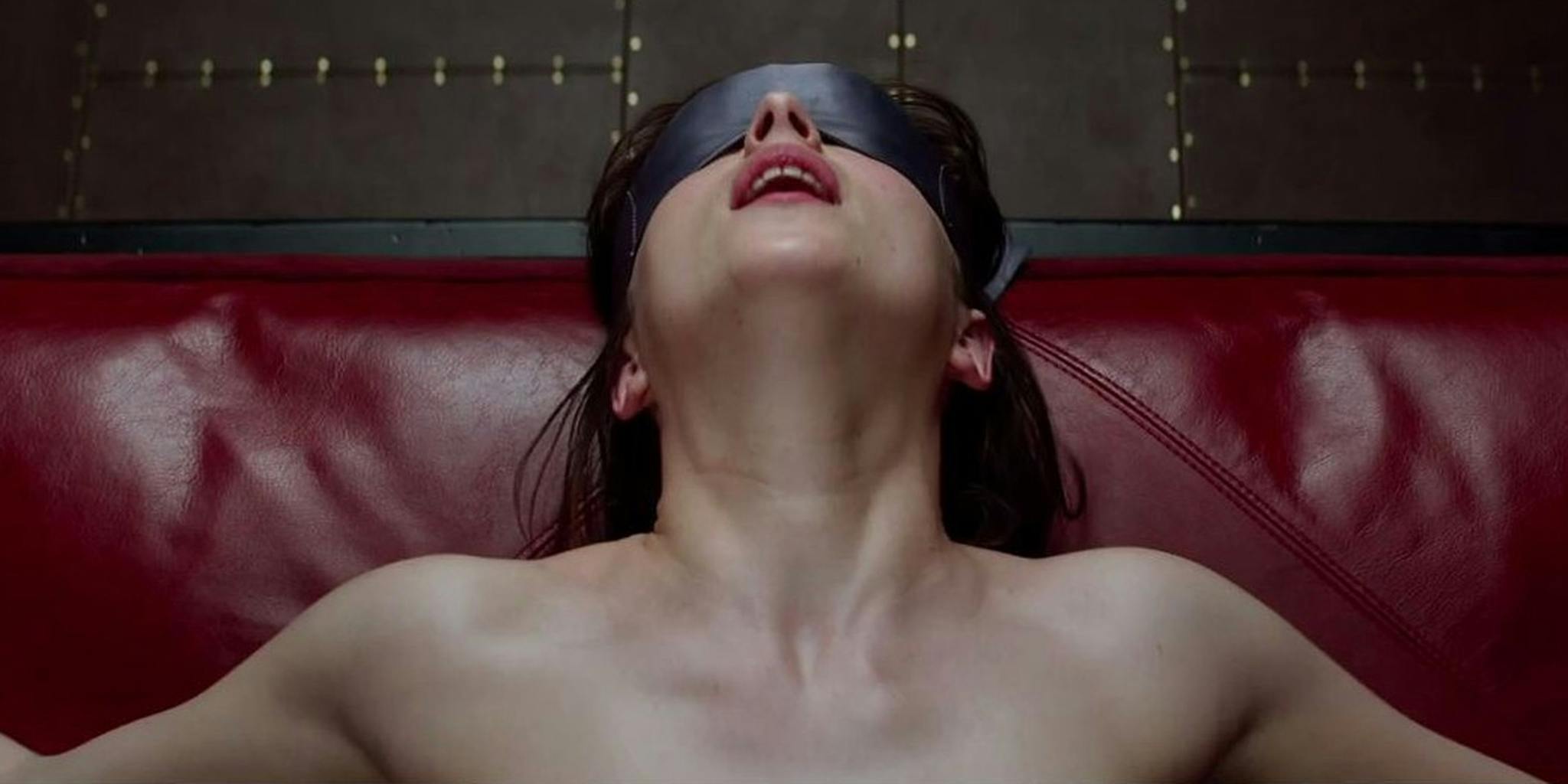BY DOMINICK MAYER
After all the speculation, the casting announcements, the subsequently rescinded casting announcements, and the fevered anticipation, the Fifty Shades of Grey trailer finally dropped last Thursday. In the 24 hours since its release, it was already watched over six million times on its official page, promising all of the longing glances, nibbled lips and dirty BDSM-flavored sex that the book offered en route to kicking off a mild cultural revolution.
Fans of the series (and they are numerous) have been waiting for this for some time now. While it feels like the film’s Valentine’s Day 2015 release date might be a case of failing to strike while the iron’s hot, it was Charlie Hunnam’s sudden departure during pre-production that caused the delay; the film was originally slated to be released next month.
And a quick glance at YouTube and its plethora of fan videos suggests that audiences are ready to make the jump from the page to the cinematic realization of the fantasies that teased a whole nation, became a punchline, engendered the record sale of sex toys, and got everybody talking.
But that’s the tricky part of bringing Fifty Shades of Grey to life: the cinematic adaptation of a collective sexual awakening. With respect to both the subject matter and the audience’s reactions to it, the reading of Fifty Shades became a paradoxically intimate act, one that millions were enjoying even as everybody knew it. And much like the fervor surrounding the start of the Twilight movies in 2008, filmmaker Sam Taylor-Johnson and her cast have been tasked with bringing reveries to life in a way that’ll both satisfy hardcore fans and draw new ones in.
As the unusual lovers Christian Grey and Anastasia Steele, Jamie Dornan and Dakota Johnson have an even less enviable job: stand in for the world’s obscure objects of desire du jour.
Johnson, in particular, is in the hot seat, since much of the cited appeal and primary criticism of E.L. James’ source novel centers around Ana’s opaque nature—how she can easily serve as a stand-in for the reader. And yet, perhaps this is the appeal, especially given that the series started as James’ experiment with Twilight fanfiction on Fanfiction.net, one of the internet’s most popular hubs for such writing.
The Huffington Post’s Zoe Triska notes the crossover appeal inherent in this: “Fanfiction.net has almost 2.2 million users, and Twilight is the second most popular genre in the books section on the site, right after Harry Potter. By pitching her novel to that audience, James tapped into a huge community of readers. Moreover, she gave those readers something they had been hungering for: Twilight with juicy, explicit sex scenes.” Where Stephanie Meyer’s books were chaste right up until the violent consummation of marriage in Breaking Dawn, James’ are the distinct opposite.
Much has been said about the harmful gender roles in both series, particularly with Fifty Shades and its occasional conflation of psychological abuse with dom-sub relationships, but it can’t be denied that the book tapped into the collective consciousness of the world in a very real, primal way. And while those discourses are necessary, it’s important to remember that a great number of people were willing to look past this. People found themselves in Christian or Ana or some combination of the two, to such a point where the e-book version of Fifty Shades not only dramatically outsold its traditionally bound (the pun is unintentional) counterpart but became the first e-book to ever surpass a million copies sold on Amazon.
The digital aspect of Fifty Shades’ success cannot be overstated, and it’s an interesting indication of why the film may have more trouble than some might think finding the massive theatrical audience it’ll need to spawn an eventual cinematic trilogy. The popular rhetoric upon the book’s 2012 release in paperback form was that e-books offered not only a platform on which it could begin its meteoric rise to prominence, but also a sort of obscurity that would make readers less self-conscious about reading what is, in frank terms, densely plotted pornography. To an extent, this speaks to the problematic assumption that nobody in polite society would ever read such a thing.
Zoe Williams wrote on this idea at The Guardian around the time of the book’s ascent:
Its popularity has come as a bit of a surprise to publishers, who thought they knew what women wanted. It must be a bit like being married to someone for 20 years, and suddenly finding out they like fisting. People who like to trace all new trends back to new technology have offered this explanation—that women who wouldn’t be seen dead reading smut on the tube could read it on their Kindle, and this launched a whole world of sales. The unexpected element is that the shame of erotic fiction is largely in the imagination, and once people had read it, they felt happy to discuss it openly. It was word of mouth that launched the paperback version on the back of the e-book.
However, open discussion is one thing. Fifty Shades became the sort of ubiquitous cultural force that everybody had an opinion about, good or bad, informed or without having ever bothered to read the thing before shaking their heads at it.
But a film version poses a new conundrum. To return to the idea of reading erotic fiction as an intimate act, reading in general is typically done in solitude, unless to children. (To be clear: this should not ever be read to children.) Buying a ticket to sit in a movie theater and watch the spankings and bindings of Fifty Shades of Grey brought to life involves being surrounded by strangers in a dark room for two hours or so, none of whom will likely know what to do with themselves in the context of other strangers. It eliminates the disconnect of the book’s appeal as a titillating personal experience and expands it into the much less immediately comfortable realm of collective arousal.
What won’t help is the likely mix of viewers there to actually see and hopefully appreciate the film with those there for the smut show—or to view it ironically. And then there’s the issue of people ridiculing the books (and likely, soon enough, the film) because of their melodramatic heft and social status as “mommy porn,” the largely derogatory name given to the book based on its core demographic and watercooler appeal. The audience has already endured enough ridicule for being into something that everybody knows about, without the added embarrassment of having to sit in a theater with such people.
Jezebel’s Zokajo illustrates where the backlash might be coming from and why it’s essential to think about: “[The books] deserve critique, for sure. But that quickly seems to spiral into ridicule of the sex scenes themselves, which, as I’ve pointed out, fulfill the fantasies of thousands of women, if not millions at this stage.”
While the purple prose used to illustrate the sex is indeed ridiculous, and more so gratingly repetitive, the joke seems not to be on James’ writing after a point, but instead the people who might be turned on by it. Releasing Fifty Shades of Grey in a theater is not only going to be a taboo experience for some (and a dealbreaker for others still), but a curious social experiment in exactly who’s going—and why. And putting those people together and letting them loose could turn into a rather ugly thing.
But one thing’s for sure: good or bad, it has the potential to be a major cultural event in the early part of 2015. That is, if people are willing to go at all.
Dominick Suzanne-Mayer is the co-editor of The Kelly Affair, and a staff writer at Consequence of Sound. He also hosts an open-mic at Uncharted Books in Chicago called Permanent Records, dedicated to the live sharing of embarrassing detritus from audience members’ younger selves.
Photo via Fifty Shades of Grey/YouTube

